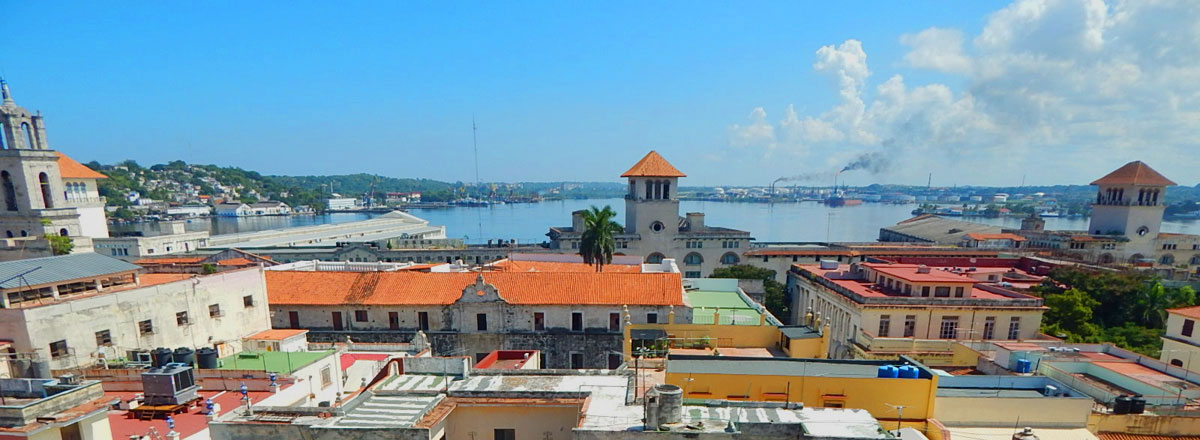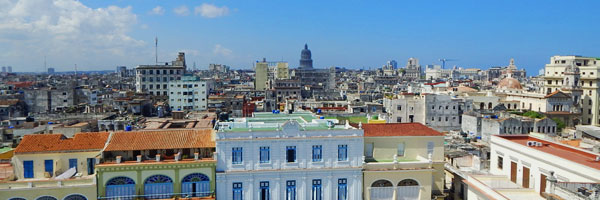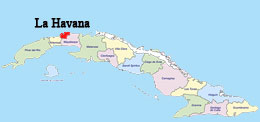Havana

Number 1 Cuba destination, the beautiful City of Havana.
Havana was established in 1514 in the islands southern coast what is today the town of Batabanó. In 1519 San Cristobal de la Habana was transferred to its current place. Due to its characteristics of port city and its location at the entrance of the Gulf of Mexico, rapidly it became an important commercial and communication center between the old and new world.
That extraordinary development made the Spanish authorities decide to change the capital from Santiago de Cuba in the east of Cuba to Havana in 1553.
In the 18th century Havana was the third largest city in the so-called new world. Constantly attacked by pirates, the metropolis was forced to construct the largest defensive system in America. As part of it, Havana was surrounded by a wall that protected the city.
The Spanish constructed a majestic city with sophisticated architecture, narrow streets, elegant plazas, colossal palaces and beautiful avenues, exquisite interior patios, stain glass windows.
Many eclectic buildings were erected, full of gold and silver, which constituted a true work of art, among them the Convent of Bethlehem, Santa Clara Convent, Santa Teresa of Jesus Church, and the Holy Angel Custodio Church.
Other examples of majestic creativity and of great value are the Capitanes Generales Palace, which was the headquarters of the colonial governments, The Cathedral with neo-classic interiors and its marvelous baroque architecture.
The heart of the old section begins with the Plaza de Armas, whose location is linked with the tradition of the first town hall while the first mass was held on November 16th, 1519, when the villa was founded under a thick ceiba tree whose religious ceremony is still practiced to date.
The city historic center has some 140 buildings dating back to the 16th and 17th century and another 200 to the 18th century and over 460 from the 19th making up a mixture of attractions for all demanding tastes. The centennial city conserves distinctive features like the famous Prado Avenue and the well- known Alameda de Paula, which was constructed during the second half of the 18th century, both famous at the time.
Old Havana still has the beauty of the earlier days with a modern touch. During the mid-19th centuries, the expansion of the city began, the walls to the city were opened and new neighborhood were created to the west. At this time, the Paseo del Prado, El Capitolio and the Grand Theater of Havana and Central Park were built. All these marvelous places are witnesses to the elegance of the colonial city known as Old Havana one of the most eclectic architectural mixture of the new world where a variety of styles coexist truly exponent of the colonial architecture in America making Old Havana a World Heritage Site declared by UNESCO in 1982.
The Havana nights are very colorful and exquisite. Music and dance to the Cuban rhythms are capable of enchanting and attracting all that love the sounds. There are many musical genres that you can enjoy while in Havana. Countless number of places will serve as scene for enjoyment of live Cuban music which will be an unforgettable experience.
HAVANA IS DIFFERENT, IS UNIQUE, VIBRANT, IT IS WORTH TO KNOW IT, ONCE LIFE TIME EXPERIENCE.
Cathedral Plaza
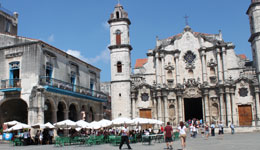
The Plaza de la Catedral is one of the most famous sites in this city due to the surrounding buildings, such as La Casa de Don Luis Chacon, The House of the Marquis of Aguas Claras, The Palace of Count Lombillo, The House of the Marquis of Arcos, Cathedral of Havana and Seminary of San Carlos and San Ambrosio.
The Plaza de San Francisco de Asis
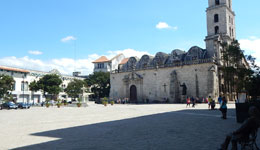
The Plaza de San Francisco was the third of the headquarters founded in the town of San Cristóbal de la Habana. It is located on one side of the Convent and the Church of San Francisco de Asís. The set is framed by Baratillo, Artesanías, Churruca and Avenida del Puerto streets. The place was the center of commercial activity due to its location next to the bay and the docks.
Old Plaza
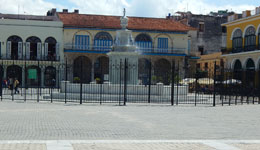
The plaza was originally called Plaza Nueva (New Square). It emerged as an open space in 1559, after the Plaza de Armas and San Francisco. In colonial times it was a residential neighborhood of the Criollo plutocracy. Plaza Vieja was the site of executions, processions, bullfights, and fiestas all witnessed by Havana's wealthiest citizens, who looked on from their balconies. The urban architectural complex of Plaza Vieja is represented by valuable colonial buildings from the XVII, XVIII and XIX and some examples of the early twentieth century. Wikipedia.
Main Square(Plaza de Armas
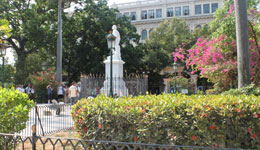
It was created in 1519, shortly after the foundation of the city, so it is the oldest and one of the most beautiful in Havana, and at the time of the colony was its administrative center. Around are several important buildings such as the Palace of the General Captains, Palace of the Second Cape, Castle of the Royal Force, the Temple, House of the Counts of Santovenia, among others.
Paseo del Prado
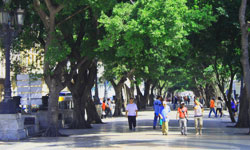
El Paseo del Prado is a granite walkway runs for a mile or so and it was built in the 18th century. Its separates Old Havana and Centro Habana. Between Neptune Street and San Salvador de la Punta Fortress. A mall trees, floor and marble benches on either side large buildings that over time some have been repaired and other substituted but make the ride more joyful the ride, as the center of Andalusian music, Hotel Sevilla, Hotel Central Park and hotel Caribbean and restaurants like Prado and Neptune, Neptune, The Asturianito, O'Reilly 304 and others.
Colon Cemetery
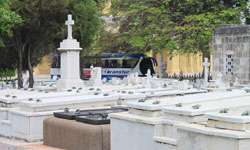
Was founded in 1876 in the Vedado neighbourhood of Havana on top of Espada Cemetery, one of the 21 cemeteries existing in the City of Havana. With the 140 acre (57 ha) cemetery is noted for its many elaborately sculpted memorials. It is estimated that today the cemetery has more than 500 major mausoleums, chapels, and family vaults. Is one of the great historical cemeteries of the world. It was declared a National Monument in 1987.
Christ
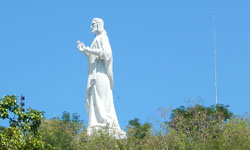
The Christ of Havana (Spanish: Cristo de La Habana) is a large sculpture (20 metres (66 ft) high including a 3-metre (10 ft) base and it weighs approximately 320 tons ) representing Jesus of Nazareth on a hilltop overlooking the bay in Havana, Cuba. Jilma Wood, Cuban sculptor presented his sketch to the event and, unexpectedly triumphed. To sculpt not used any model, but was inspired by his ideal of male beauty: slanting eyes, lips pulpusos in line with the racial miscegenation. The statue was built from 67 blocks of marble that had been brought from Italy after being personally blessed by Pope Pius XII.
The Malecon

Malecón. Long bare concrete wall, guarding a wide avenue and is beset by the ravages of the Gulf Stream. Cuba's most famous promenade; with six-way lanes is topped by a wide sidewalk, crowned by a wall that serves as a seat thousands of people who contemplate the blue sea, the passage of ships, or the beloved face who shares a nice moment to appreciate the sunset.
The model of Havana
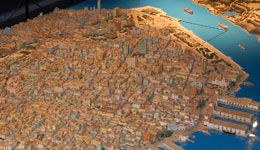
The model of Havana. If you want to see the structure of the historic area of Old Havana, its boundaries, main buildings and sites around, there is nothing better than contemplate the scale model of the Historic Center.
Hamel alley
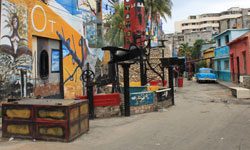
In April 21, 1990 Salvador Gonzalez Escalona, name Salvador ( painter, muralist and sculptors born in 1948, Camaguey ) started with murals and sculptures in the street Callejón de Hamel, near University of Havana. For sculptures he used scrap objects like bathtubs, hand pumps, pin wheels etc., and for the murals he used different kind of available paint, including car enamel. His work is known as an "afro-cuban" style. He describes his work as a mix of surrealism, cubism and abstract art. Salvador has no formal art education, but as early as in 1968 he had his first art exhibition "Arte Popular Cubano" in "Museo de Artes Decorativas", Havana.
Central Park Jose Marti
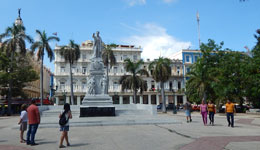
Completed in 1877 after the city walls were knocked down, the park is bordered by El Prado, Zulueta, San José and Neptuno Streets. It is surrounded by significant buildings, such as the Gran Teatro de La Habana; the Inglaterra, Telégrafo, Parque Central and Plaza hotels; Hotel Parque Central Torre; and the building devoted to international art of the Museo de Bellas Artes. In the late 18th century, the park was pretty much bare of trees and mostly paved. Trees, fountains and sculptures were added to the park after 1959.
The Dark Chamber

Located on the top floor of the eclectic-style early 20th-century Edificio Gómez Vila—the plaza’s tallest building (35 meters/115 feet)—on the northeast corner, the Cámara Oscura provides a 360-degree panoramic view of much of Old Havana in real time, projected at 30X magnification through a peephole camera onto a pitch-dark screen. It was a gift from the Council of Cadiz, Spain, to the City Historian’s Office. The Cámara Oscura was invented by Leonardo da Vinci invention. Is the only one of its kind in Latin America and the Caribbean, and is one of 74 worldwide today. It is best seen on clear, cloudless days.
San Agustín Church
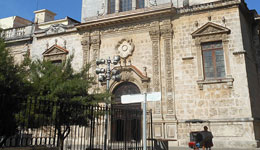
The Church of St. Augustine is a former Catholic church in Old Havana currently under the name of St. Francis of Assisi. It is of the one religious buildings most largest and majestic of the city, almost hidden among the houses of the old town surrounding. It has a beautifully decorated dome, beautiful multicolored stained glass, chapels and a wonderful high altar. Ubication: Calle Cuba esquina a Amargura, Habana Vieja.
Chinatown

In the late nineteenth century, Chinese immigrants settled in the corner of Calle Zanja and Calle Dragon where, from 1874, put in shops up and dedicated to various services, including shops, taverns, laundries, spaces etc. Chinatown was the main population settlement of immigrants from that nation in the Caribbean.
Castle of the Three Kings
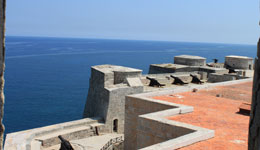
The Castle of the Three Kings of Morro, also known as Morro Castle began its construction (1538) in unison that the Castle of San Salvador de la Punta, guarding jealously both the entrance of the bay, to the continuous lookout for pirates and privateers , which they ravaged several times the population. It was badly damaged during the taking of Havana by the English, so the following year of 1763 was rebuilt. Junto the lighthouse that accompanies it, is a symbol of the city and Cuba.
Botanical Gardens
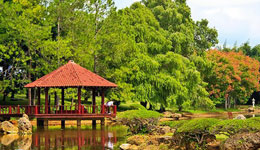
These 600-hectare botanical gardens feature approximately 150,000 examples of 4,000 different species of trees and bushes from all over the world. A tractor train ride around the park departs four times a day and is the best way to see it all, since it covers most of the garden, which is way too much distance to cover on foot. The main attractions are the tranquil Japanese garden and Cuba’s best vegetarian restaurant, El Bambú.
Central Railway Station.
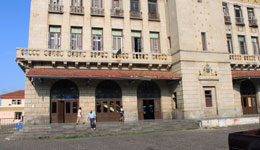
On November 30, 1912, the current building of the train terminal was officially inaugurated, as the operations center of Ferrocarriles Unidos de Cuba and the Havana Central Railroad. In the place where the Military Arsenal was demolished, it was built in 1912 the Central Railway Station, which replaced the first station habanera railways, Villanueva, located on land now occupied by the National Capitol. With a distinctive architecture, sober and stylized lines, the building copy elements of Spanish Renaissance and is due to engineers, architects and American contractors. It has four floors finished off on both sides by two turrets 38 meters above street level, built of steel and reinforced concrete and decorated with terracotta tiles rise.
Alameda de Paula
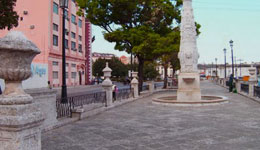
The construction of the Alameda de Paula, one of Havana’s first promenades, in 1777. Initially, this promenade was merely a dirt track with some benches, flanked by two lines of poplars. It was named Paula after the nearby church of San Francisco de Paula. This stretch became one of the city’s most visited places after a tiled pavement and stone seats were added in 1805.
Santo Cristo del Buen Viaje Church
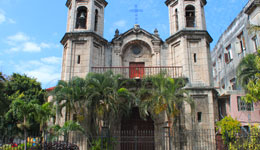
It was the second parish in the city, after the Church of the Holy Spirit. In 1755 it was rebuilt and adopted the structure that currently owns the two steeples door and blind oculus at the top. The church was added to the bottom and the side of a building to house a convent, the residence of the friars, a free parochial school and private school in San Augustine. The name of Church of Santo Cristo del Buen Viaje, was due to the popularity acquired during the colonial era this temple among travelers and navigators.
San Francisco of Paula Church

Since 2000 is a concert hall dedicated to early music and an exhibition space for works of Cuban contemporary art. It is Headquarters old music group Ars Longa and the International Old Music Festival Esteban Salas. As altar piece has one of the most beautiful stained-glass windows from the city. It has one of the only organs that are fully preserved in Cuba, with the original pipe and machinery, in its original location.
Our Lady of Mercy Church
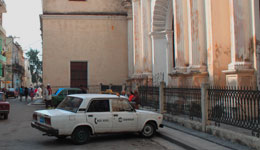
It is considered one of the most sumptuous religious temples of Havana. He began building in 1630 and is located in the neighborhood of San Isidro. It is the one that has more faithful and more popular participation. Undoubtedly, the biggest attraction of this church is its interior decoration with mural paintings by renowned Cuban artists. Annex convent is defined by a cloistered courtyard of great beauty. It maintains its original functions.
University of Havana
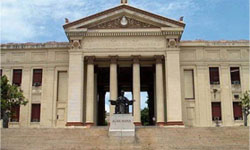
It was founded on January 5, 1728 by the Dominican friars belonging to the Order of Preachers and is the oldest university in Cuba. It is also one of the first in America. It is attached to the Ministry of Higher Education (MES). It was declared a National Monument by Resolution 03 on October 10, 1978



